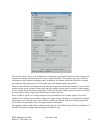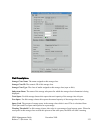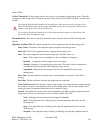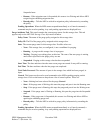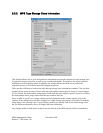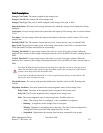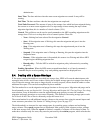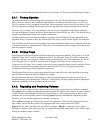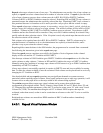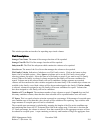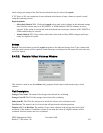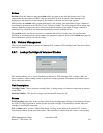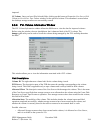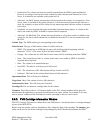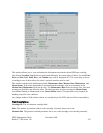Repack selects tape volumes in one of two ways. The administrator can provide a list of tape volumes to
repack, or repack can select volumes based on a number of selection criteria. If repack is provided with
a list of tape volumes to process, those volumes must be in RW, RO, EOM or EMPTY Condition.
Volumes in RWC or DOWN Condition cannot be selected. Repacking RW and EMPTY tape volumes is
permitted because the administrator has explicitly selected the tape. Repacking EMPTY tape volumes is
also permitted because it is harmless to do so and it provides a way to prove that the volume is empty.
When repack selects tape volumes to process, it uses number, storage class, family, retired, checked out,
and percentage full criteria to select a set of tape volumes. The selected volumes will be in RO or EOM
condition. Volumes in RWC, EMPTY or DOWN Condition are never selected. Tapes that are in RW
Condition and are also Retired will be treated as if they are in RO Condition and may be selected if they
qualify under the other selection criteria. If the -M option is used, only retired tapes that meet the rest of
the selection criteria will be selected.
Disk volumes to be repacked must be in RW, RO or EMPTY Condition. EMPTY volumes may be
repacked because it is harmless to do so, the administrator has explicitly selected the disks, and it
provides a way to prove that the volume is empty.
Repacking disks cannot be done via the SSM window; the program must be executed from a command
line following the instructions given in the repack man page.
When the repack process completes successfully, the Number of Active Segments in the volume's
display will be zero and the VV Condition will be EMPTY.
Note that tape volumes in EOM Condition go to EMPTY Condition when repack moves all of the data
on the volumes to other volumes. Volumes in RW and RO Condition do not go to EMPTY Condition.
Manually setting the Condition of an empty tape volume to EOM causes it to go to EOM Condition, then
immediately to EMPTY Condition.
After a tape volume is successfully repacked, it remains in EMPTY state and is not available for storing
data. To make the volume available, it must be reclaimed. Disk volumes can be placed back in service by
changing the VV Condition to RWC.
Note that both disk and tape repack operations can put significant demands on system resources,
particularly when repacking striped volumes. Since repack performs a tape to tape copy operation, it will
consume twice as many tape drives as the stripe width of the volumes being repacked.
The reclaim program deletes empty tape virtual volumes and re-creates them with the same
configuration as the original volume. The PV Name(s), Stripe Width, PV and VV Block Sizes, PV and
VV Estimated Size and other parameters of the old VV are used to create a new VV with a new Virtual
Volume ID (VVID). The metadata describing the old VV is deleted. HPSS requires that tapes be
reclaimed, rather than reused, so that it can be certain that no references to the old VV exist or could be
resolved.
Reclaimed tape volumes are entered into HPSS metadata in RWC Condition and are immediately
available for use.
8.4.3.1. Repack Virtual Volumes Window
HPSS Management Guide November 2009
Release 7.3 (Revision 1.0) 260



